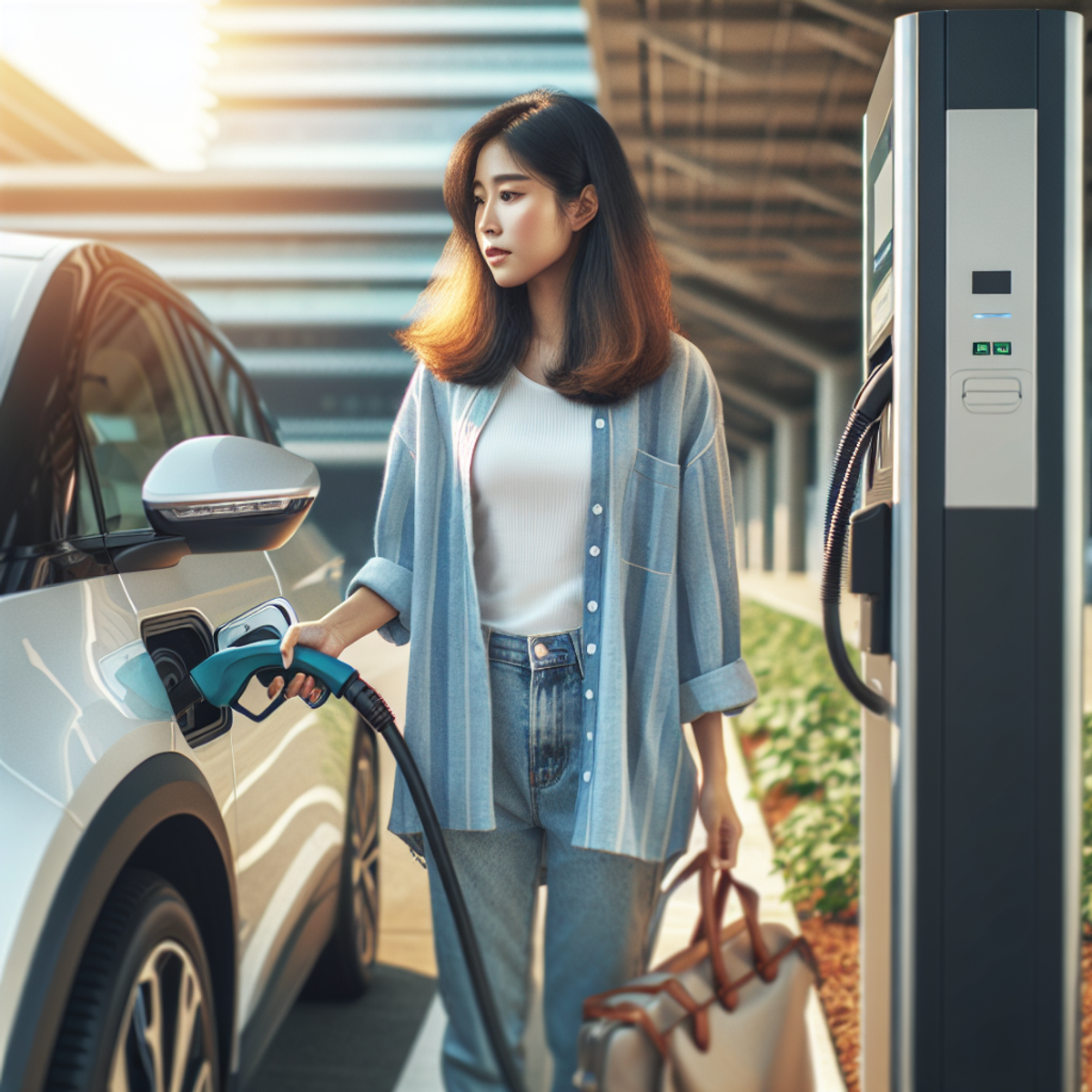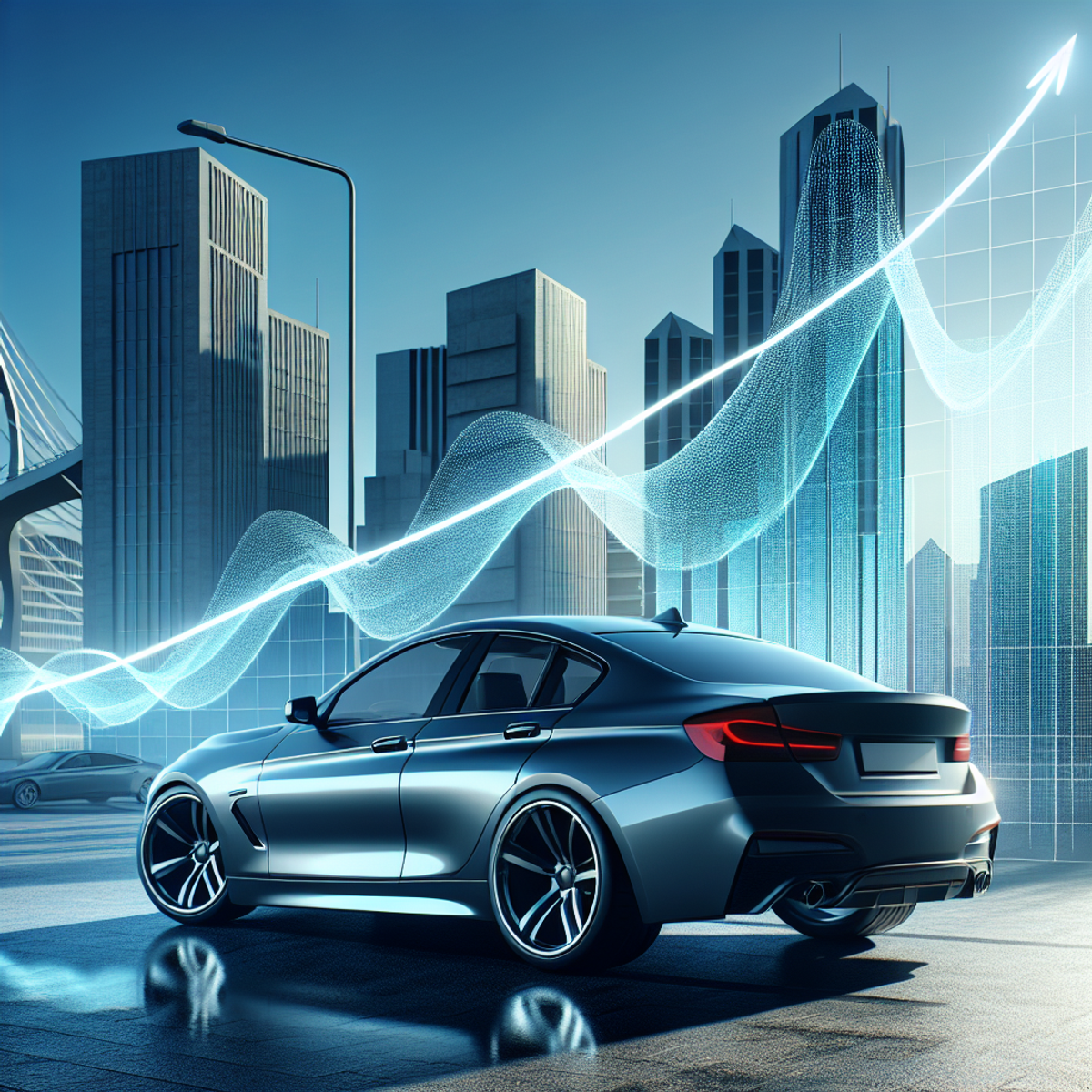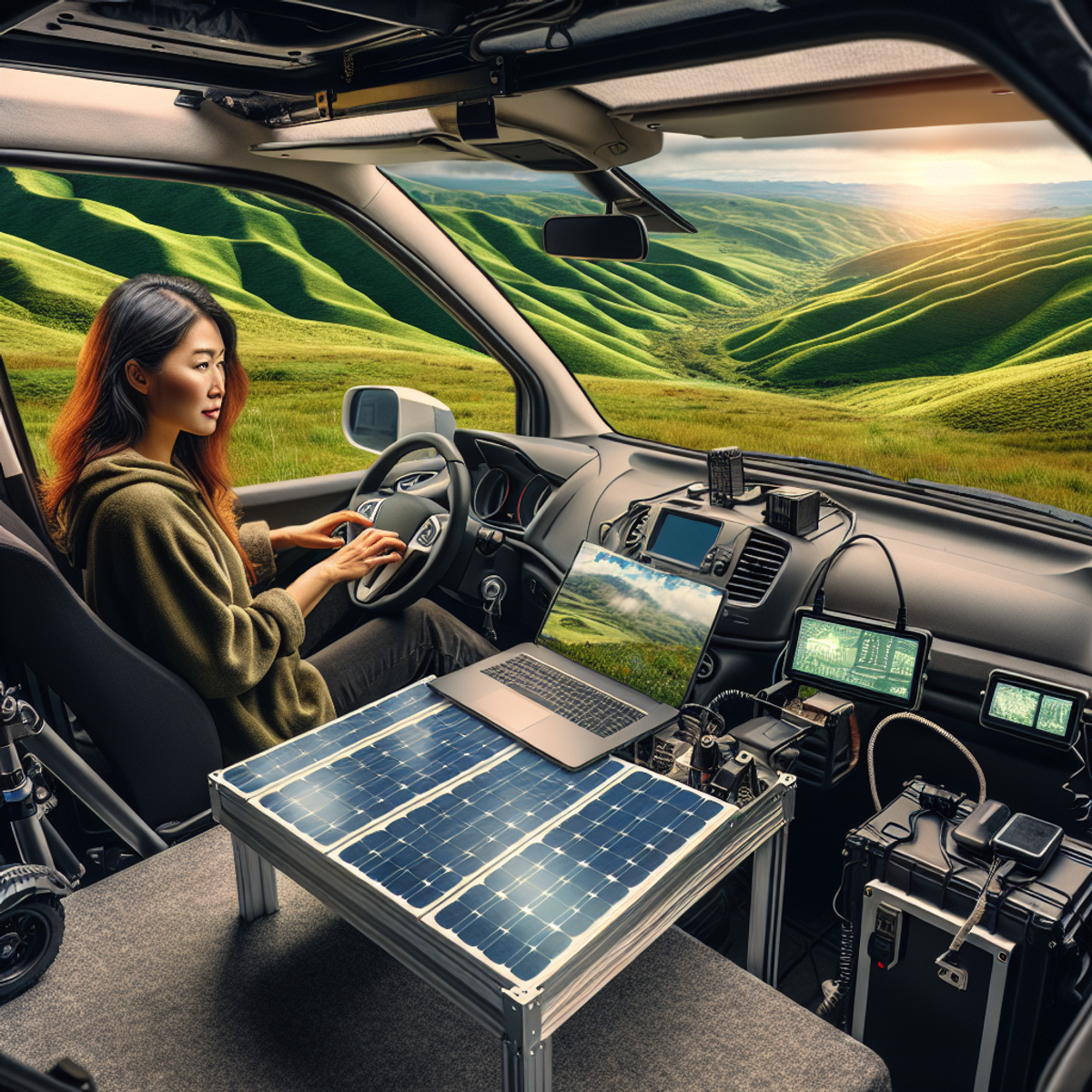Introduction
Green car loans are essential in promoting the use of electric vehicles (EVs) by making them more affordable and accessible to consumers. In this guide, we will explore the latest trends in green car loans for electric vehicles in 2024 and provide valuable insights to keep readers informed about the current market.
Why Discuss the Latest Trends in 2024?
The EV industry is always changing, and it’s crucial to stay updated with the latest information to make smart choices. By knowing what’s happening with green car loans right now, consumers can find the best financing options for themselves.
This article will cover several key areas related to green car loans and EVs. Here is an overview of what you can expect:
- The Benefits of Green Car Loans: We will explore how green car loans offer lower interest rates and favorable loan terms for eco-friendly vehicles, resulting in cost savings for borrowers. Additionally, we will discuss how government incentives such as tax credits and rebates further reduce the upfront cost of purchasing an electric vehicle. Furthermore, we will highlight the long-term affordability of owning an EV through savings on fuel expenses and lower maintenance costs.
- Types of Electric Vehicles: We will delve into the three main types of electric vehicles: battery-powered EVs, plug-in hybrid EVs, and hybrid electric vehicles. By understanding their distinct characteristics and functioning, readers can make an informed choice based on their needs and preferences.
- The Growing Public Charging Infrastructure: We will examine the significant growth observed in the public charging network for EVs. This expansion addresses range anxiety concerns and facilitates long-distance travel, making electric vehicles a more practical option for everyday use.
- Financing Options for Home EV Chargers: We will provide an overview of various financing mechanisms available to support the installation of home EV chargers, including loans, leases, and utility programs. Additionally, we will highlight the role of government incentives and grants in encouraging the development of residential charging infrastructure.
- Government Incentives for Electric Vehicle Purchases: A comprehensive guide to major government incentives offered at the federal and state levels will be provided, including tax credits, rebates, and access to high-occupancy vehicle (HOV) lanes. We will emphasize the importance of being aware of eligibility criteria and application procedures to maximize the benefits.
By exploring these key areas, readers will gain a comprehensive understanding of green car loans and the various aspects related to electric vehicle adoption. Let’s dive into the world of green car financing and discover how it can support the transition to electric vehicles in 2024 and beyond.
1. The Benefits of Green Car Loans
Green car loans offer several advantages for individuals looking to purchase electric vehicles. These loans are specifically designed to incentivize the adoption of eco-friendly vehicles and provide financial benefits to borrowers. Here are some key benefits of green car loans:
Lower interest rates and favorable loan terms
Lenders often offer lower interest rates and more favorable loan terms for eco-friendly vehicles compared to traditional car loans. This can result in significant cost savings for borrowers over the life of the loan.
Government incentives
In addition to the lower interest rates, governments provide various incentives such as tax credits and rebates to promote electric car purchases. These incentives help reduce the upfront cost of buying an electric vehicle, making it more affordable for buyers.
Savings on fuel expenses
Electric vehicles are known for their energy efficiency, which translates into substantial savings on fuel expenses. Unlike traditional gasoline-powered cars, electric vehicles rely on electricity as their primary source of energy, which is generally cheaper than gasoline.
Lower maintenance costs
Electric vehicles have fewer moving parts and require less maintenance compared to internal combustion engine vehicles. They don’t require oil changes or regular tune-ups, resulting in long-term cost savings for owners.
These benefits make green car loans an attractive option for individuals interested in purchasing electric vehicles. Not only do they provide financial advantages through lower interest rates and government incentives, but they also contribute to long-term affordability by reducing fuel expenses and maintenance costs.
2. Types of Electric Vehicles
When it comes to electric vehicles (EVs), there are three main types to consider: battery-powered EVs, plug-in hybrid EVs, and hybrid electric vehicles. Each type offers its own set of advantages and considerations, allowing consumers to choose the option that best suits their needs and preferences.
Battery-Powered EVs
Battery-powered EVs rely solely on electricity for power and have no internal combustion engine. They are powered by a large battery pack and an electric motor, providing a fully electric driving experience. Battery-powered EVs offer the following benefits:
- Zero Emissions: As they don’t burn any fossil fuels, battery-powered EVs produce zero tailpipe emissions, making them environmentally friendly.
- Lower Operating Costs: Electric vehicles have lower fuel costs compared to traditional gasoline-powered cars since electricity is generally cheaper than gasoline.
- Quieter Operation: Without an internal combustion engine, battery-powered EVs offer a quieter and smoother driving experience.
However, there are some considerations with battery-powered EVs:
- Limited Range: The range of battery-powered EVs can vary depending on the model, but they typically have a limited range compared to conventional vehicles. This means you may have to plan your trips accordingly and ensure access to charging infrastructure.
- Longer Charging Times: Charging an electric vehicle takes longer than refueling a gasoline car. While home charging overnight is convenient, long-distance travel may require planning for charging stops along the route.
Plug-in Hybrid EVs
Plug-in hybrid electric vehicles combine an internal combustion engine with an electric motor and battery pack. They offer the flexibility of running on electricity alone or using the internal combustion engine when needed. Here are some advantages of plug-in hybrid EVs:
- Extended Range: Plug-in hybrids have both an electric motor and a gasoline engine, allowing for longer driving ranges without worrying about recharging.
- Reduced Emissions: While plug-in hybrids still use gasoline, they produce fewer emissions compared to traditional vehicles due to the electric motor’s contribution.
- Flexibility: With a plug-in hybrid, you have the option to rely on electricity for shorter trips and switch to gasoline for longer journeys.
However, there are a few factors to consider:
- Limited Electric Range: Plug-in hybrids generally have a smaller electric-only range compared to battery-powered EVs. This means you may still need to rely on gasoline for longer trips.
- Maintenance Complexity: Plug-in hybrids have both electric and internal combustion components, which can lead to increased maintenance requirements and costs.
Hybrid Electric Vehicles
Hybrid electric vehicles (HEVs) combine an internal combustion engine with an electric motor. Unlike plug-in hybrids, HEVs do not offer the option to charge the battery externally; instead, the battery recharges through regenerative braking and the internal combustion engine. Here are some benefits of hybrid electric vehicles:
- Improved Fuel Efficiency: The combination of an electric motor and an internal combustion engine in HEVs results in better fuel efficiency compared to conventional vehicles.
- Reduced Emissions: HEVs produce lower emissions than traditional vehicles due to their reliance on the electric motor during certain driving conditions.
- Seamless Transition: With an HEV, you don’t have to worry about plugging in or finding charging infrastructure since it operates using self-charging technology.
Considerations for hybrid electric vehicles include:
- Limited Electric Range: Since HEVs do not have a large battery pack like plug-in hybrids or battery-powered EVs, their electric-only range is limited. They primarily rely on the internal combustion engine for longer trips.
- Less All-Electric Power: Compared to plug-in hybrids or battery-powered EVs, HEVs have less power from the electric motor alone.
By understanding the distinct characteristics and advantages of each type of electric vehicle, you can make an informed decision based on your driving needs, range requirements, and charging infrastructure availability. Whether you prioritize zero emissions, extended range, or a balance between electricity and gasoline, there is an electric vehicle type that suits your preferences.
3. The Growing Public Charging Infrastructure
The public charging infrastructure for electric vehicles has grown significantly in recent years, solving the problem of range anxiety and making long-distance travel easier. This increase in charging stations is crucial for getting more people to switch to electric vehicles.
Why is the public charging infrastructure important?
Here are some key points to consider:
- Addressing range anxiety: One of the main barriers to electric vehicle adoption has been the fear of running out of battery power while on the road. However, with the growing number of public charging stations, drivers have more confidence in their ability to find a charging point when needed. This addresses range anxiety and encourages more people to consider electric vehicles as a viable transportation option.
- Facilitating long-distance travel: The availability of public charging infrastructure also enables long-distance travel for electric vehicle owners. With strategically placed charging stations along major highways and popular routes, drivers can plan their journeys and charge their vehicles en route, making long trips more convenient and feasible.
- Promoting widespread adoption: A well-developed public charging infrastructure plays a crucial role in promoting the widespread adoption of electric vehicles. It provides convenience and accessibility for EV owners, making it easier for them to charge their vehicles while away from home. This accessibility encourages more individuals to choose electric vehicles, knowing that charging will not be a major obstacle.
- Encouraging businesses to install chargers: The growth of the public charging network also encourages businesses to install EV chargers in their parking lots or facilities. This not only attracts EV owners as customers but also demonstrates a commitment to sustainability and environmental responsibility. As more businesses offer charging facilities, it further enhances the overall charging infrastructure and supports the transition to electric transportation.
- Unpacking the challenges and opportunities of electric vehicles: Additionally, there are various challenges and opportunities associated with electric vehicles that need to be understood for effective implementation. These include factors such as grid integration, battery technology advancements, and policy support among others.
The expansion of the public charging infrastructure is an essential part of the ongoing shift towards electric mobility. Its continued growth will contribute to the wider acceptance and adoption of electric vehicles by addressing concerns about range limitations and providing the necessary infrastructure for convenient and accessible charging.
4. Financing Options for Home EV Chargers
When it comes to installing home EV chargers, there are several financing options available to support this investment. These options can make it more affordable and convenient for electric vehicle owners to have a charging station at home. Here is an overview of the various mechanisms you can consider:
- Loans: Many financial institutions offer loans specifically for home EV charger installations. These loans typically have favorable interest rates and repayment terms, making it easier for homeowners to finance the cost of purchasing and installing a charging station.
- Leases: Some utility companies and third-party providers offer leasing options for home EV chargers. With a lease, you can pay a monthly fee to use the charging equipment without having to worry about upfront costs or maintenance expenses.
- Utility Programs: In certain regions, utility companies may provide incentives or rebates for residential charging infrastructure. For example, programs like those found in New York or Oregon aim to encourage homeowners to install EV chargers by offering financial support or lower electricity rates for charging.
- Government Incentives: Governments at the federal, state, and local levels often provide grants or tax credits for residential charging stations. These incentives can significantly reduce the out-of-pocket expenses associated with installing an EV charger at home.
By taking advantage of these financing options and incentives, electric vehicle owners can make the transition to sustainable transportation more accessible and affordable. It’s important to explore the available programs in your area, such as those in New York or Oregon, to determine which option best suits your needs and financial situation.
5. Government Incentives for Electric Vehicle Purchases
Government incentives play a crucial role in promoting the adoption of electric vehicles by offering financial benefits to buyers. Here are some key points to consider:
- Major government incentives are available at the federal and state levels, including tax credits, rebates, and access to high-occupancy vehicle (HOV) lanes.
- It’s essential to be aware of the eligibility criteria and application procedures for these incentives to maximize the benefits.
By understanding and taking advantage of these government incentives, individuals can significantly reduce the overall cost of purchasing an electric vehicle, making it a more attractive and feasible option for environmentally conscious consumers.
Impact of President Biden’s Executive Order on the Electric Vehicle Industry
President Biden’s recent executive order has had a significant impact on the electric vehicle (EV) industry, signaling a strong commitment to promoting EV adoption and domestic manufacturing. The order outlines key initiatives that aim to accelerate the transition to electric vehicles and address various challenges in the market.
1. Expanding Charging Infrastructure
One of the primary focuses of the executive order is expanding charging infrastructure across the country. This initiative recognizes that a robust charging network is essential for EV owners, addressing range anxiety concerns and facilitating long-distance travel. By investing in the development of a comprehensive charging infrastructure, the government aims to encourage widespread adoption of electric vehicles.
2. Electrification of Federal Fleets
Another important aspect of President Biden’s executive order is the electrification of federal fleets. This initiative involves replacing existing government-owned vehicles with electric alternatives. By transitioning federal fleets to electric vehicles, the government sets an example for other organizations and individuals, showcasing the viability and benefits of EVs.
3. Supporting Battery Technology Development
Furthermore, the executive order emphasizes supporting battery technology development. This commitment recognizes the importance of advancing battery technology to improve performance, reduce costs, and enhance overall EV ownership experience. By investing in research and development, the government aims to drive innovation in battery technology and further accelerate EV adoption.
President Biden’s executive order demonstrates a strong commitment to advancing electric vehicle adoption and promoting sustainable transportation solutions. The initiatives outlined in the order have far-reaching implications for the EV market:
- Driving investments in charging infrastructure
- Encouraging fleet electrification
- Fostering technological advancements in battery technology
These efforts will play a crucial role in shaping the future of the electric vehicle industry.
Future Outlook: Advancements in Electric Vehicle Technology and Manufacturing
The future of electric vehicles (EVs) holds immense potential for advancements in technology and manufacturing. These advancements are crucial in driving down costs and improving the overall performance of EVs. Here are some key points to consider:
Technological Innovations
Ongoing research and development efforts are focused on enhancing battery technology, which is a critical component of EVs. Innovations in battery chemistry, such as solid-state batteries, have the potential to greatly increase energy density and reduce charging times. Additionally, advancements in motor technology and power electronics are improving the efficiency and range of electric vehicles.
Sustainable Materials
The shift towards sustainable materials in EV manufacturing is gaining momentum. Automakers are exploring alternatives to traditional materials, such as using recycled or bio-based plastics, natural fibers, and lightweight metals like aluminum to reduce the environmental impact of production processes.
Efficient Production Techniques
Manufacturers are continuously striving for more efficient production processes to meet the increasing demand for EVs. This includes implementing automation and digitalization in assembly lines, optimizing supply chains, and adopting lean manufacturing principles. These efforts not only help streamline production but also contribute to reducing costs and improving overall quality.
The future outlook for electric vehicle technology and manufacturing is promising. As advancements continue to be made, we can expect more affordable, efficient, and sustainable electric vehicles on our roads. These developments will play a significant role in accelerating the transition towards a greener transportation future.
The Role of Auto Lenders in Facilitating the Transition to Electric Vehicles
The shift towards electric vehicles (EVs) requires both technological advancements and financial support. Auto lenders play a crucial role in making this transition easier by offering specialized loans for electric cars. This change in the auto finance industry ensures that buyers have convenient access to funds, making EVs more affordable and available.
1. Making Electric Vehicles More Affordable
By providing financing options specifically designed for green cars, auto lenders are helping the EV market grow. These special loan products often come with:
- Lower interest rates
- Favorable terms
Borrowers can take advantage of these benefits to finance their EV purchase at a more affordable cost.
2. Overcoming Financing Challenges
Collaboration between lenders, automakers, and policymakers is key to addressing financing obstacles and speeding up the adoption of sustainable transportation solutions. By working together, these parties can create innovative financing programs that:
- Encourage people to buy EVs
- Support the development of charging infrastructure
3. Providing Information and Guidance
Auto lenders can also educate consumers about the advantages of electric vehicles and the various financing options available. Through informative resources and guidance like those provided by the Alternative Fuels Data Center, they can assist potential buyers in making well-informed decisions and navigating the EV financing process.
In conclusion, auto lenders have a significant role in promoting the transition to electric vehicles. They do this by offering specialized loans, collaborating with other stakeholders, and providing educational materials.
Conclusion
The future is bright for green car loans and electric vehicles in 2024. By considering green car financing options, you can play a crucial role in driving the adoption of sustainable transportation solutions. With lower interest rates, favorable loan terms, tax credits, and rebates, embracing electric vehicles becomes not only an environmentally conscious choice but also a financially prudent one. The advancements in technology and manufacturing are making electric vehicles more accessible and efficient than ever before.
Government incentives further sweeten the deal, providing financial support and making electric vehicles a compelling option for eco-conscious consumers. By staying informed about the latest trends and taking advantage of these opportunities, you can contribute to a greener future while enjoying the benefits of owning an electric vehicle.
As we move forward into 2024 and beyond, exploring green car loans for electric vehicles will not only benefit individuals but also contribute to a more sustainable and environmentally friendly society as a whole.





